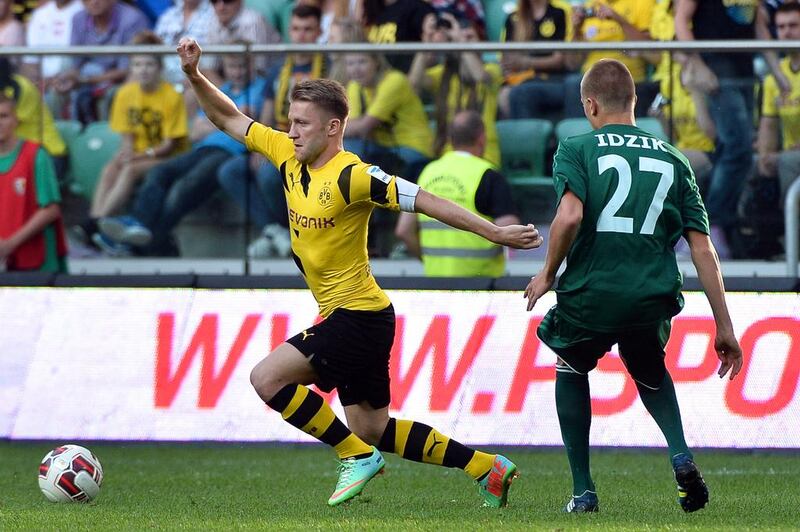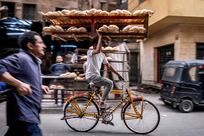When the balls go into the bowls on Monday for the draw of the last 16 of the Uefa Champions League, German football holds one of the best numbers.
The Bundesliga has four teams in the knock-out phase of club football’s elite; no other league has as many. All have a special motivation, too: the German capital, Berlin, will host the final, a little over 10 months after Germany won the World Cup.
The same quartet of clubs, Bayern Munich, Borussia Dortmund, Bayer Leverkusen and Schalke – now waiting to see who they play next in Europe – were all involved in the last 16 a year ago. A healthy consistency at the top of the Bundesliga?
Perhaps. But now look at the domestic table. As usual, Bayern are streaking clear. The bottom is topsy-turvy. Three of the five clubs who were German champions in the past 10 years find themselves in positions 14 to 18 in the 18-team division. Just above that bracket are Hamburg, dormant giants who nothing seems able to rouse to greatness.
Rock bottom going into Round 15 are Stuttgart, the 2007 champions. Werder Bremen, the 2004 title-winners, sit penultimate, and Borussia Dortmund, champions in 2011 and 2012, are still exhaling their long sigh of relief that they shifted up four spots from 18th with last week’s 1-0 victory over Hoffenheim. They go to Hertha Berlin on Saturday hoping for a fifth Bundesliga victory of the campaign.
Dortmund's Jekyll-and-Hyde season is a puzzle. In the Champions League, whose final they reached only 18 months ago, they won their group, ahead of Arsenal, weathering a long list of absentees with injury. Domestically, they have leaked goals and apparently lost the pizzazz and energy that characterised their successes of the last three years under charismatic coach, Jurgen Klopp.
Klopp’s position is in no danger from his Dortmund bosses, but they do fear two things. Not relegation, which seems unlikely. But, should the club not finish in the top four – or win the Champions League – a failure to qualify for that competition next year would make it harder to retain their best players, such as Marco Reus.
Second, they worry the admired Klopp may lose his appetite for the German league, a place where the pursuit of uncatchable Bayern can become dispiriting, particularly when Bayern aggressively recruit your leading talent each summer. Mario Gotze went from Dortmund to Bavaria last year, Robert Lewandowksi this year.
Klopp is pleased to have other old hands with him this weekend. Midfielder Nuri Sahin is back and available after seven months of fitness problems, while dynamic Polish winger Jakub Blaszczykowski has ended a 10-month lay-off. Ilkay Gundogan celebrated his comeback from injury with the breakthrough goal against Hoffenheim. There are signs that Dortmund have their shape again, and some of their old verve.
“I hope the hard times are behind me now,” Blaszczykowski said after running out for a few minutes against Anderlecht in midweek.
“It feels great to be involved again,” said Sahin, who was also reintroduced in the 1-1 draw with Anderlecht.
Klopp has this month also been able, for the first time in a year and a half, to select his first-choice back four: Lukas Piszcek, Mats Hummels, Neven Subotic and Marcel Schmelzer.
But the crisis has cost one player his spot. Veteran goalkeeper Roman Weidenfeller, Germany’s reserve at the World Cup, was dropped last weekend in favour of Australian Mitchell Langerak. Weidenfeller will stay on the bench, unless Langerak suffers injury or suspension, for the remainder of 2014. “In the new year, we will look at it again,” said Klopp, who has been ruthless with his long-serving keeper but also knows not to make an enemy of him.
Langerak will miss games soon enough. He has an Asian Cup appointment ahead with Australia.
sports@thenational.ae
Follow us on Twitter at @SprtNationalUAE






